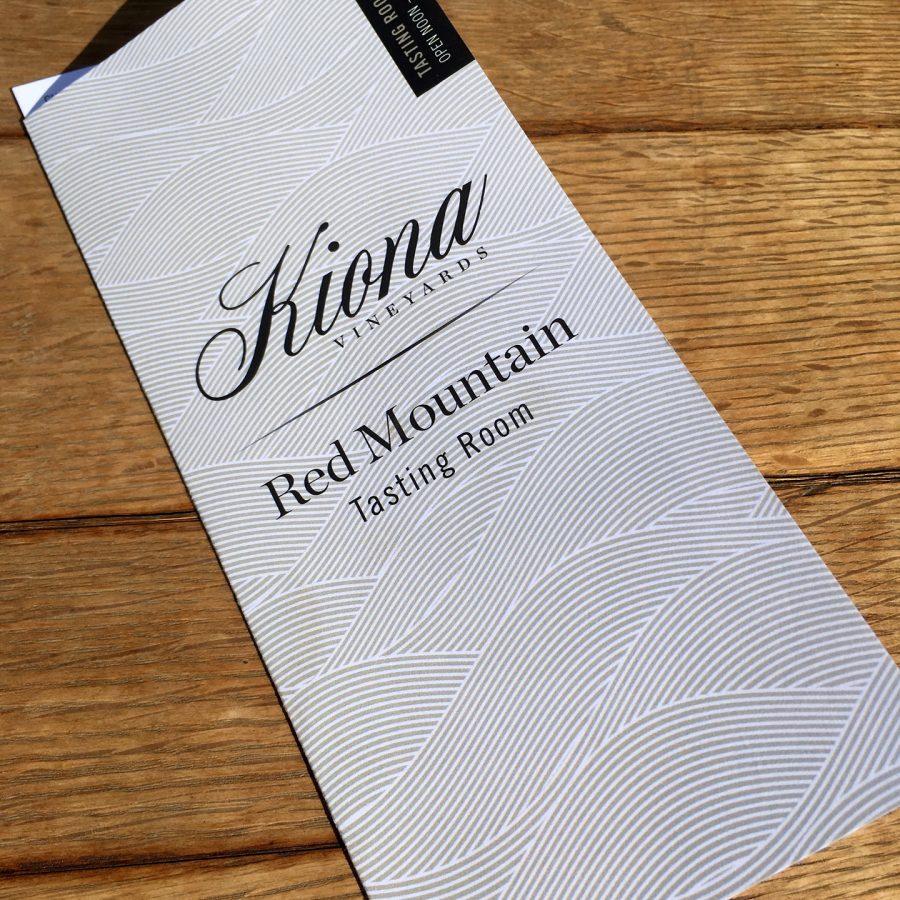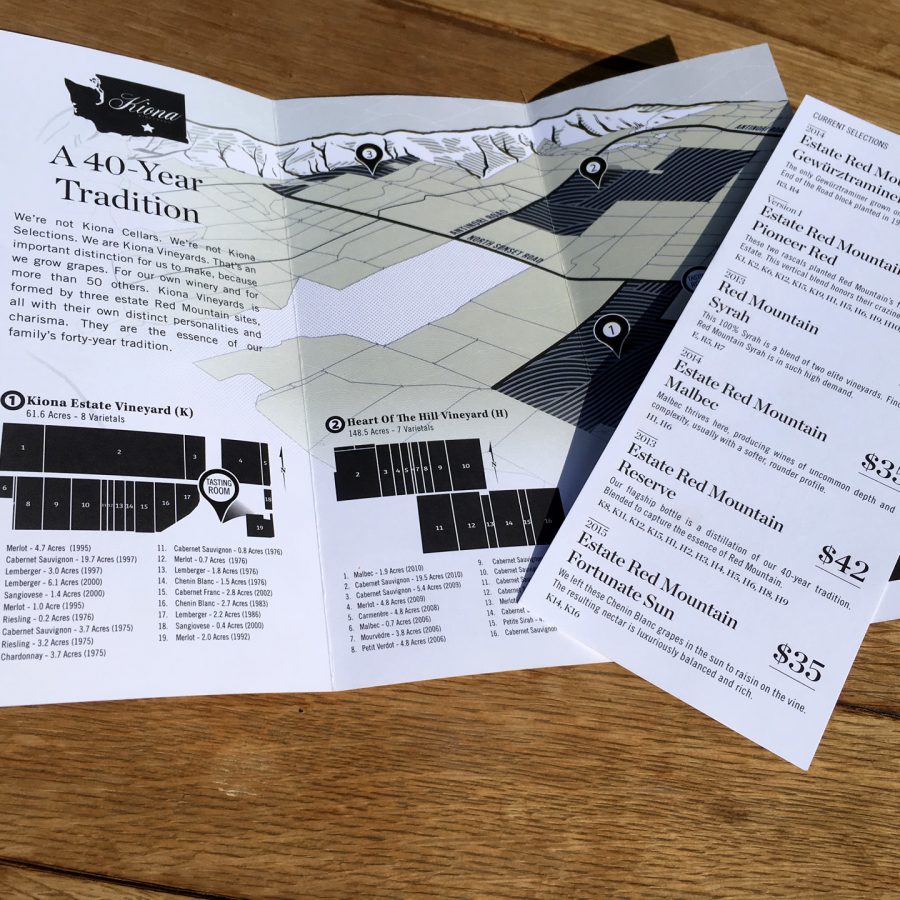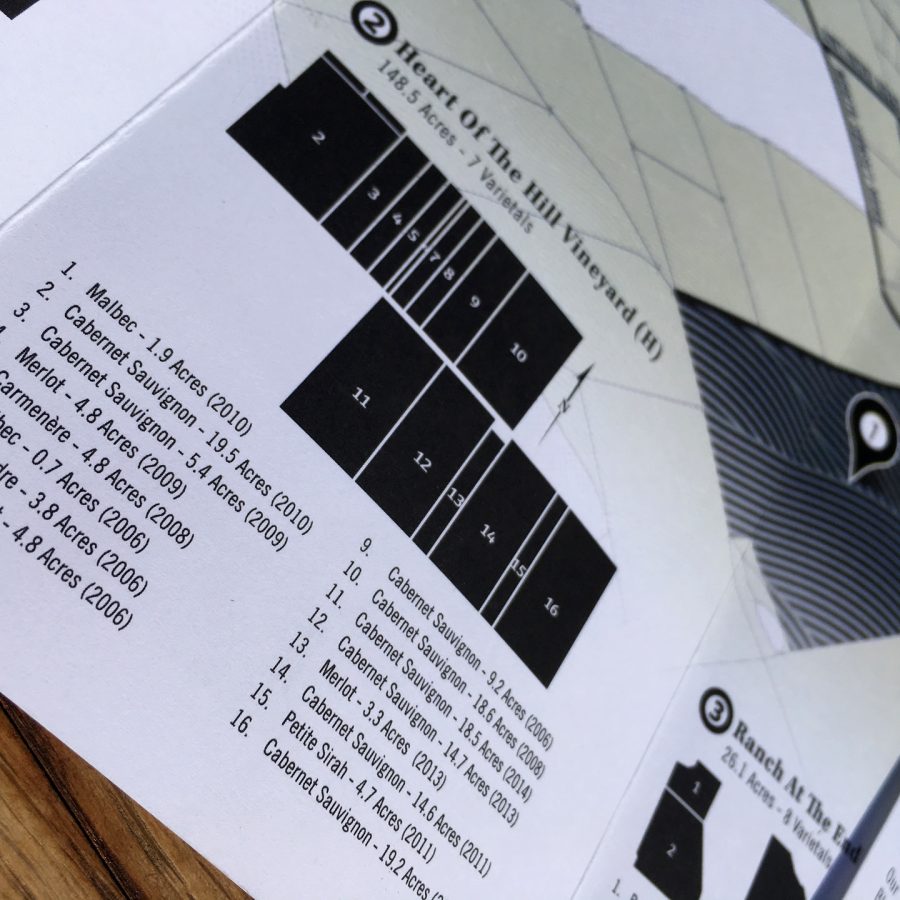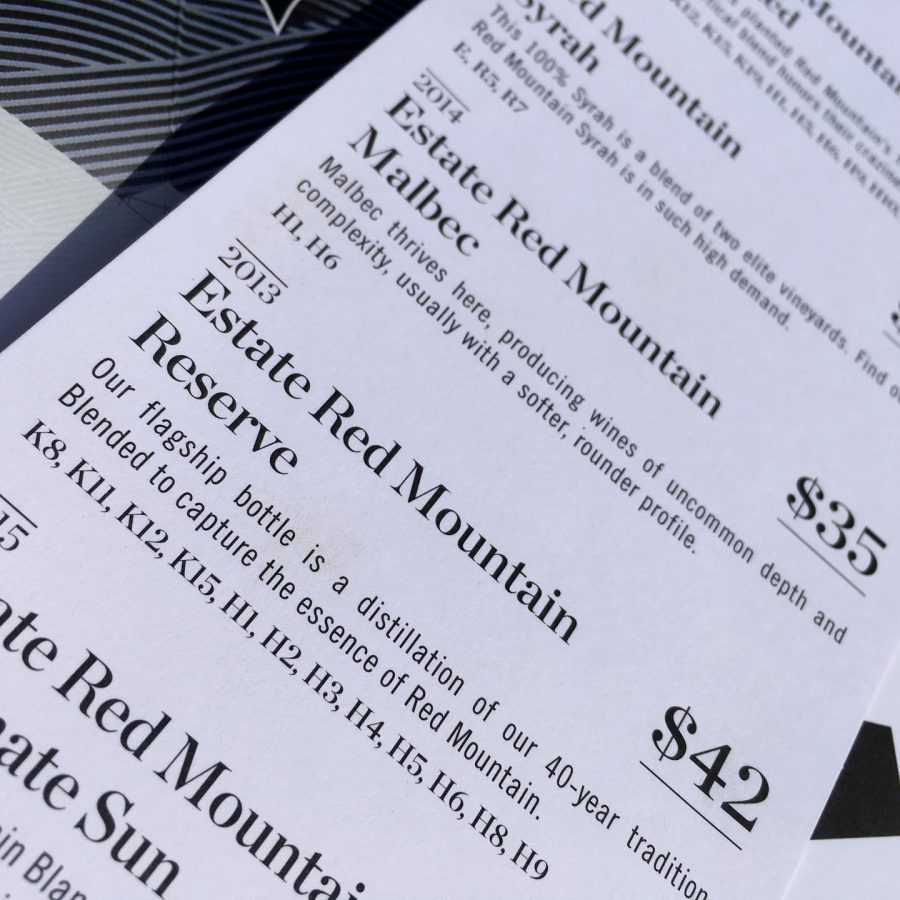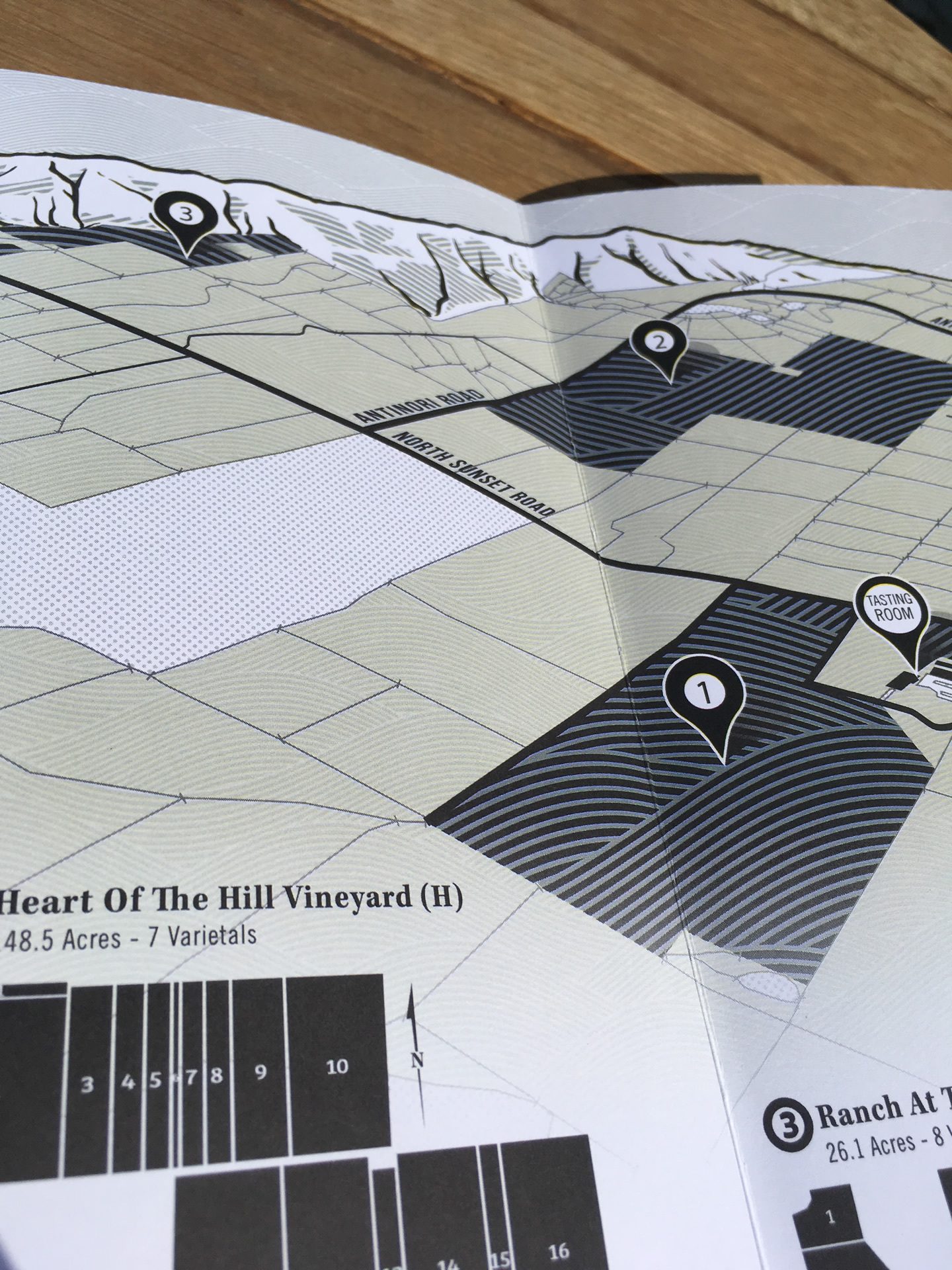I am a big fan of maps. Whenever I travel around the country to sell wine, I always, ALWAYS bring a map. A map can tell you much more than a laminated score sheet or an iPad displaying a slide show.
If you've ever tasted wine with me, chances are there was a map involved. Probably more than one.
Geography is the single most important variable when it comes to making a wine taste a certain way. Origin and geography matter. More than winemakers, more than varietals, more than yeast or barrel or blending variables; wines taste like their place.
We've had maps in our tasting room for several years, but they were decidedly DYI utilitarian jobs: basically screen grabs from Google Earth with lines drawn over the important bits.
Long story short, I've wanted to up our map game for quite some time. This project has been in the works for a more than a year, if you include conceptualization and execution.
Tasting at Kiona Vineyards and Winery is a unique experience. It's extraordinarily rare in the world of wine to stand at the bar in the tasting room and be able to look out the windows and see the vineyards from whence the wine came. It's something that I often take for granted, because I am here all the time and I grew up on Red Mountain; having vines around is normal for me. But that doesn't mean it's not a big deal. It's fantastic. It's rare. And it's important.
Which is why we made this new tasting menu/map. It helps us "show" people that we are a vineyard operation. It's one thing to hear something; it's something else entirely to see it.
For example, our largest and arguably most influential vineyard is Heart of the Hill. You can't see it from the tasting bar during the summer because some of the trees at my Grandparent's house obscure it. We tell people about it, but because they can't see it, it may as well be a million miles away. The map helps with context. It helps show where it is in relation to the tasting room, but also how small the Red Mountain AVA is in general, and how close everything is in the grand scheme of things.
Another feature that I am pretty proud of is something we are calling the "Composition Code." If that sounds nerdy to you, that's because it IS nerdy. On the tasting sheet we have included an alpha-numerical code that corresponds to that wine's sourcing on Red Mountain. We only have two blocks of Malbec, for example, and they are both at Heart of the Hill. So the code for the 2014 Estate Red Mountain Malbec is H1, H6. You can see the blocks on the map. Single vineyard, single varietal wines have a very short code. But some wines, like the Estate Red Mountain Reserve, have a long code. This tells an important story about not only the composition of the wines, but also how they are built. The blending philosophy with the Reserve allows (and encourages) us to selectively include 1-2 barrel components from all of our various vineyard material. So it comes from all over. Malbec, by comparison, is much more hyper-specific in its sourcing because we only have 2.5 acres of it.
We are super excited about rolling these out. They arrived yesterday afternoon, and I pulled them out immediately and started using them at the bar. They were still warm (It was 105° yesterday)!
I owe a big thank you to Vince Bachmann of Line by Line Creative in Seattle for listening to me try to describe what I had in my head and making the design work in a beautiful, tangible way. And to the fantastic folks at Trysk Print Solutions (also in Seattle) for their impeccable printing service and quality. You guys rock!
